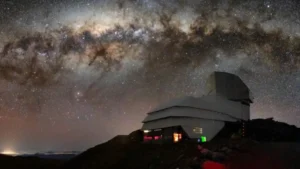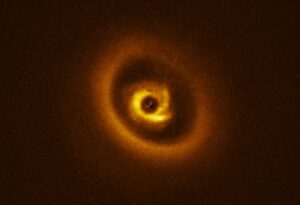One way to settle the perennial conjecture over life on Mars: Go live there ourselves.
That’s exactly what NASA’s new device aims to help us do, by providing the most elemental requirement for survival. The Mars Oxygen In-Situ Resource Utilization Experiment (MOXIE) is a small module designed to generate oxygen for astronauts.
NASA first launched it as a toaster-sized fixture and small experiment aboard the Perseverance rover in 2021. It produced immediate success, in the form of about 100 minutes of breathable oxygen. NASA reported that it plans to scale up toward possible viability for a whole crew.
During seven hour-long production runs last year, MOXIE cranked out roughly 15 minutes of oxygen per hour, New Scientist reported. MOXIE did so under a variety of harsh Martian conditions — at extreme temperatures, and shortly after a dust storm.

Artist’s rendering of MOXIE aboard Perseverance. Photo: NASA/JPL-Caltech
The results added up to a total of 50 grams of oxygen. It’s a step in the right direction for humans’ potential journey to the Red Planet, said NASA, but a lot of steps remain. Practically speaking, Martian astronauts would not only need oxygen to breathe but also to get back to Earth.
Needed: 25 tonnes of O2
The rockets NASA would have to use to lift four astronauts off the surface of Mars would burn about 25 tonnes of oxygen alone. Pour on the seven metric tonnes of rocket fuel the job would require, and the cargo requirement for such a mission becomes massive.
By comparison, the astronauts themselves wouldn’t need much oxygen. MOXIE’s principal investigator Michael Hecht said that the four explorers would need about one metric ton in total over the course of a year.
The planet’s atmosphere is about 96% carbon dioxide, so finding a viable O2 source there seems unlikely. The clear solution to both problems, NASA says, would be to make oxygen natively on Mars.
How MOXIE works
That’s exactly what NASA envisions the scaled-up version of MOXIE doing. The agency said that a one-ton version of the oxygen converter could produce those 25 tonnes of O2, and do it on an “economical and practical” basis.
The way the device works seems to validate both those descriptors — albeit somewhat amazingly. MOXIE works by prying oxygen atoms off of carbon dioxide molecules. Each chemical reaction it performs yields two oxygen and one carbon monoxide atom. It releases the CO — which, of course, is harmful to humans in concentration — into the Martian atmosphere.
Performing the separation requires enormous heat. The device needs a temperature of 800˚C to work. So NASA builds it out of an array of highly heat-resistant materials. 3D-printed nickel alloy parts heat and cool the gases flowing through them.
A “lightweight aerogel” helps contain the heat. And a thin gold coating on the outside reflects infrared heat back inward, keeping it from radiating outward and potentially damaging other parts of Perseverance — or, maybe in the future, astronauts.
“This is a critical first step at converting carbon dioxide to oxygen on Mars,” said Jim Reuter, associate administrator for STMD. “MOXIE has more work to do, but the results from this technology demonstration are full of promise as we move toward our goal of one day seeing humans on Mars.”






